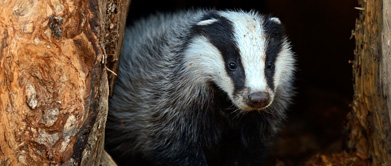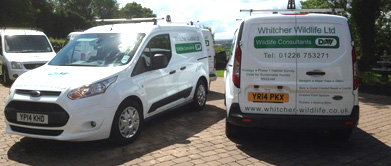Great Crested Newt Surveys By Whitcher Wildlife
Whitcher Wildlife Ltd has experience in all aspects of Great Crested Newt (GCN) surveying and mitigation with most of our team holding licences allowing us to carry out surveys for GCN throughout England, Scotland and Wales.
Surveys for GCN are undertaken in various stages with our team being highly experienced in all phases of GCN surveys. Below is an outline of the stages that are required to complete a GCN presence and absence or full population class assessment.
The findings of our GCN surveys will be prepared into a comprehensive report outlining the survey findings, evaluating the impacts of any proposed works and making any recommendations necessary.
Site Survey and Habitat Suitability Index (HSI) Assessment
The initial requirement is to survey the site to assess the habitats present, both terrestrial and aquatic. This survey needs to identify the habitats present on the site but also needs to take into account any ponds located in the surrounding area, up to 500m from the site. An assessment must be carried out up to this distance because GCN will regularly move up to 500m between aquatic and terrestrial habitats.
Where ponds are identified a ‘Habitat Suitability Index (HSI) assessment is required. This is a form of assessment developed to evaluate the quantity and quality of habitat presence and will return a numeric value, where 0 indicates unsuitable habitat and 1 indicates optimal habitat.
Our team are experienced in site assessment and the HSI criteria and will assess the site and any ponds that can be accessed within 500m, using areas of public access. Where additional access is required we will advise on this allowing access to be agreed for a full assessment of ponds, if required.
Should there be potential for GCN within the area, further surveys will be required to establish the presence or absence of the species and to establish the population class where present.
Pond Surveys
Physical pond surveys for GCN can be used to establish a presence or absence of the species and can also be used to establish a population class for the area. The surveys must be carried out between mid-March and mid-June, when GCN are present in ponds, and will require access permission to all ponds, on and off site, prior to the surveys commencing.
Each survey must utilise several survey methods, where applicable. The surveys will require the pond to be visited during the afternoon, evening and morning with the surveys methods available including bottle trapping, torch searching, netting and egg searching. Four surveys are required to establish a presence or absence with a further two surveys required to establish a population size.
Our team are experienced and equipped to carry out GCN surveys. We hold a large stock of bottle traps along with additional survey equipment. Due to the surveys requiring work in and around water we required two surveyors on site at all times for safety reasons.
eDNA Sampling
A relatively new technique for great crested newt surveys is to eDNA sample ponds for GCN DNA. The samples taken (optimally between April and June) are analysed by a third-party company, should results return positive for great crested newts further pond surveys may be required to establish a population classification.
Our team are experienced in the eDNA collection and sampling process and our samples are tested by a company that we regularly use for DNA analysis who are listed as a quality supplier by Natural England.
Contact Now
